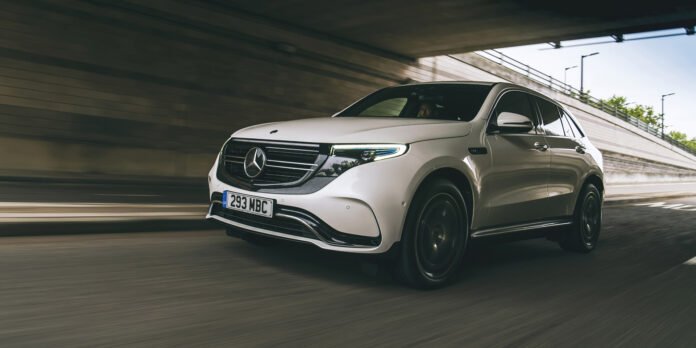Choosing a GAP (guaranteed asset protection) insurance policy can feel overwhelming if you’re not familiar with the options out there and how they all work.
Return to Invoice, Vehicle Replacement and Finance Hire GAP are all policy types available to buyers who use a PCP (personal contract purchase).
Arguably, if you are a PCP buyer then you’re a highly suitable candidate for GAP insurance because the vehicle will lose value faster than you are paying off your debt to the finance company. There is a very good chance that, if your car is stolen or written off (called a Total Loss), the payout from your car insurance won’t be enough to cover your finance debt. That means you won’t have a car but you could still owe the finance company thousands of pounds.
GAP insurance is a solution to these concerns, as it bridges the difference between what your car insurance pays out and what you need to top up for. That exact amount you are eligible for will depend on the type of policy you’ve selected, so let’s take a closer look at what these policies do.
- Need a GAP recap? What is GAP insurance and do you need it?
To help illustrate the difference between the different types of GAP insurance, we’re going to look at a car that was bought new a year ago and has now been written off. These are the details:
New car price: £20,000
Initial payment: £5,000
Insurance write-off value: £12,000
Outstanding finance debt: £17,000
Return to Invoice
A Return-to-Invoice policy is the original GAP insurance. This essentially puts you back in the position you would have been had you not bought the vehicle, based on the original price of the car. However, it doesn’t take your finance debt into account.
So in our scenario above: Your car cost £20,000 new a year ago, using £5,000 of your own money for a deposit and borrowing the rest. Now the insurance company is giving your £12,000 for it after it has been written off. Your Return to Invoice GAP policy would give you an extra £8,000 to cover the shortfall between your insurance payout and the original price of the car, so you end up with £20,000 again.
However, your finance debt is £17,000, so you have to pay that off from your combined insurance payments, leaving you with £3,000 in your pocket.
Because you spent £5K of your own money on a deposit for your car, you’re now £2K worse off than before you started, but that’s a lot better than without GAP, where you would have lost that original £5K plus you’d have had to find another £5K to clear your finance debt.
Finance GAP
These policies operate exactly the same as the policies used for contract hire and hire purchase, although some of the T&Cs may vary. In essence, they cover the money outstanding on the finance agreement over and above the insurance payout value if your car is a total loss.
In our hypothetical scenario above, you’ve received a car insurance cheque for £12,000 but you still owe the finance company £17,000. A Finance GAP policy would cover you for the £5,000 shortfall between your insurance payout and your finance debt, so you can now clear your debt.
You’re left with nothing afterwards, so that £5,000 deposit you put in originally is gone, but you’re not having to find money to clear your debt to the finance company.
In the example above, you get less GAP payout from Finance GAp than you would with Return to Invoice policy. However, Finance GAP cover is particularly valuable if your car is stolen or written off in the first few weeks or months of your ownership, which is where your debt position is greatest.
Because of the nature of how PCP finance works, with interest and fees all added into the mix, you could end up owing the finance company more than the original price of the car if you lose it in the first few months of ownership. Finance GAP makes sure that you’re protect against that, whereas a Return to Invoice policy might not cover all of your finance debt.
Vehicle Replacement
A vehicle replacement GAP policy goes above and beyond bringing you back to the original price of your car by covering the shortfall up to any increased price of that car today.
Once gain, the original price of the car was £20,000 and you’ve received a cheque for £12,000 from your car insurer. But in the time since you bought your car, the price has increased to £22,000 – an extra £2K from what it was a year ago.
A vehicle replacement GAP policy would pay you £10,000 to cover the difference between your £12K insurance payout and the new £22K price for a replacement car. That’s £2K more than you’d get from a Return to Invoice policy on the same car.
You still have to pay £17K to the finance company to clear your PCP debt, but you’ll be left with £5K in your pocket to put towards another car like the one you’ve just lost.
Since this kind of cover gives you more of a payout, it’s inevitably going to be more expensive.
What about a used car on PCP?
GAP policies can be purchased for either a new or a used car. GAP insurers will have certain T&Cs regarding age and mileage on a used car, but otherwise the policy works in the same way.
Combined policies
Many GAP policies are now ‘combined’ policies, which basically makes sure you get the highest figure from either the invoice price or your finance debt.
Usually this means that a Return to Invoice or Vehicle Replacement policy is combined with a Finance GAP policy to ensure you’re covered for either the price of a new car or your finance debt, whichever is higher.
So which is the best choice?
Inevitably, the ‘best’ policy will depend on your circumstances and the prices involved. The higher the level of cover and payout offered, the more the policy is likely to cost. So a vehicle replacement policy that includes finance cover is going to cost more than just a finance policy on its own, but you’ll get a larger payout if you need to make that claim.
Whichever type of policy you plump for, a GAP insurance product will almost cetainly save you a lot of money should the worst happen and your car is lost.
- Special offer: ALA Insurance offers a special 10% discount on GAP insurance for readers of The Car Expert
- More GAP insurance advice at The Car Expert











